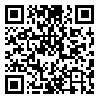Volume 23, Issue 3 (Fall 2019)
jwss 2019, 23(3): 197-210 |
Back to browse issues page
Download citation:
BibTeX | RIS | EndNote | Medlars | ProCite | Reference Manager | RefWorks
Send citation to:



BibTeX | RIS | EndNote | Medlars | ProCite | Reference Manager | RefWorks
Send citation to:
Shojaei P, Gheysari M, Nouri H, Esmaeili H, Eslamian S. Comparison of Applied Water and Estimated Water Requirement by WUCOLS and LIMP Methods for Golha Garden in Isfahan. jwss 2019; 23 (3) :197-210
URL: http://jstnar.iut.ac.ir/article-1-3644-en.html
URL: http://jstnar.iut.ac.ir/article-1-3644-en.html
1. Department of Water Engineering, College of Agriculture, Isfahan University of Technology, Isfahan, Iran. , Gheysari@cc.iut.ac.ir
Abstract: (7433 Views)
Creation and conservation of urban parks is challenging in arid environments where daily thermal extremes, water scarcity, air pollution and shortage of natural green spaces are more conspicuous. Water scarcity in the arid regions of Iran is major challenge for water managers. Accurate estimation of urban landscape evapotranspiration is therefore critically important for cities located in naturally dry environments, to appropriately manage irrigation practices. This study investigated two factor-based approaches, Water Use Classifications of Landscape Species (WUCOLS) and Landscape Irrigation Management Program (LIMP), to measure the water demand in a botanic garden. The irrigation water volume applied was compared with the gross water demand for the period from 2011 to 2013. On average, WUCOLS estimated an average annual irrigation need of 1164 mm which is 15% less than the applied value of 1366 mm while the LIMP estimate of 1239 mm was 9% less than the applied value. Comparison of estimated and applied irrigation showed that a water saving of 9% can be made by the LIMP method. The outcomes of this research stressed the need to modify the irrigation requirements based on effective rainfall throughout the year, rather relying on long-term average data.
Keywords: Urban parks, Landscape coefficient, Urban irrigation management, Water requirement of urban parks
| Rights and permissions | |
 |
This work is licensed under a Creative Commons Attribution-NonCommercial 4.0 International License. |






